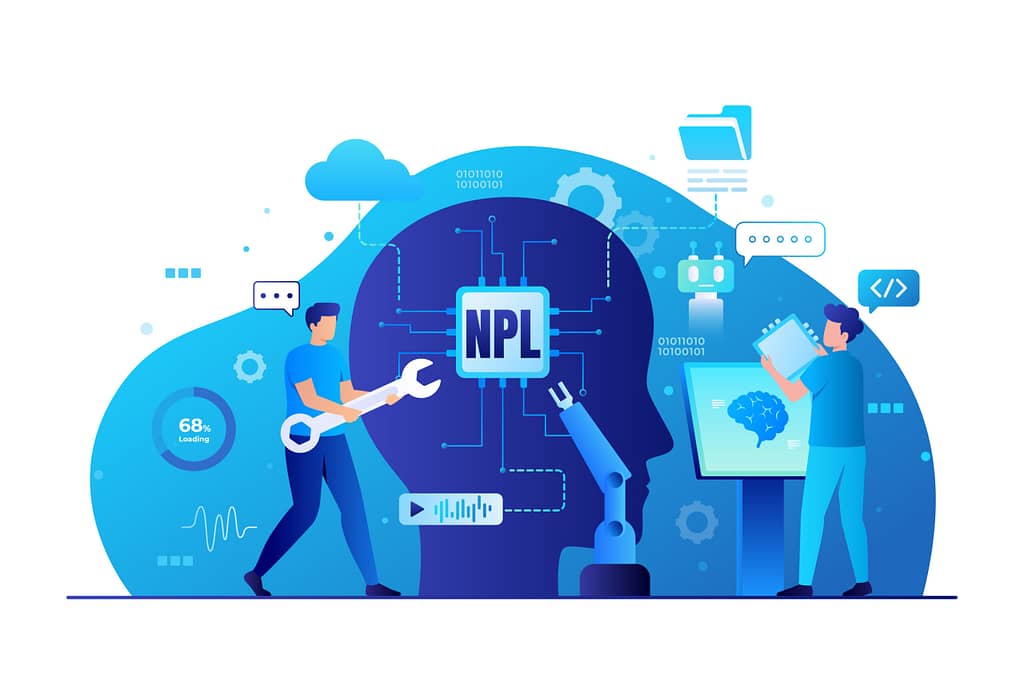
Digital Marketing Trends 2023: Shaping the Future of Online Success
Discover the latest digital marketing trends for 2023 that will revolutionize the way businesses connect with their audience and drive online success. Stay ahead of the competition and explore cutting-edge strategies for the year ahead.
Table of Contents
Introduction
The digital marketing landscape is ever-evolving, and staying abreast of the latest trends is crucial for businesses to succeed in the fast-paced online world. As we venture into 2023, it’s essential to anticipate and adapt to the transformative trends that will shape the future of digital marketing. In this comprehensive guide, we’ll explore the most impactful trends that are set to dominate the industry in 2023.
1: AI-powered Personalization
Artificial Intelligence (AI) will take personalization to new heights, allowing businesses to offer tailored experiences to their customers. By leveraging data analytics and AI algorithms, marketers can understand customer behavior, preferences, and intent, leading to hyper-personalized content, product recommendations, and targeted ads.

AI-powered personalization goes beyond addressing customers by their names; it delves into understanding their preferences, purchase history, and online behavior. This data-driven approach enables businesses to deliver individualized content and product recommendations at the right moment, increasing the likelihood of conversions and customer satisfaction.
2: Voice Search Optimization
The increasing popularity of voice assistants and smart speakers will drive the need for voice search optimization. Marketers must optimize their content for voice queries, including long-tail conversational keywords, to capture the growing voice search audience.
Voice search optimization requires a shift in keyword strategy, focusing on natural language and question-based phrases. As voice search becomes more prevalent, businesses must ensure their websites are voice-friendly, providing concise and accurate responses to user queries, to remain visible in voice search results and enhance the user experience.
3: Video Marketing Dominance
Video content will continue to be a dominant force in digital marketing. Short-form videos, live streaming, and interactive video experiences will captivate audiences and boost engagement rates. Businesses must focus on creating compelling video campaigns to connect with their target customers effectively.

With the rise of video-sharing platforms and the popularity of stories, businesses have an opportunity to leverage video marketing creatively. Short, attention-grabbing videos can showcase products, share behind-the-scenes content, or tell captivating stories, fostering a deeper emotional connection with the audience and driving brand loyalty.
4: Immersive Augmented Reality Experiences
Augmented Reality (AR) will revolutionize the way brands engage with their audiences. Interactive AR experiences, such as virtual try-ons and 3D product visualizations, will enhance customer engagement and increase brand loyalty.
AR allows consumers to interact with products virtually, providing a more immersive and interactive shopping experience. Businesses can use AR to build excitement around new products, enable virtual fitting rooms, and engage customers in playful experiences that create lasting impressions.
5: Influencer Marketing Evolution
Influencer marketing will evolve beyond mere endorsements, with a focus on authentic collaborations and long-term partnerships. Brands will seek micro-influencers who have niche and engaged audiences, leading to more meaningful connections.

Instead of one-off sponsored posts, brands will engage influencers in long-term partnerships, allowing them to become advocates and ambassadors for the brand. Micro-influencers, with their smaller but dedicated followings, can establish genuine connections with their audiences, leading to higher trust and greater impact.
6: Sustainable and Purpose-driven Marketing
Consumers are increasingly conscious of their environmental impact. Brands that adopt sustainable practices and authentically embrace purpose-driven marketing will resonate with conscious consumers and build stronger brand loyalty.
Sustainability and purpose-driven marketing involve more than just greenwashing; it requires businesses to integrate environmental and social responsibility into their core values and operations. Consumers align with brands that share their values, and purpose-driven marketing communicates a brand’s commitment to making a positive impact on society and the environment.
7: Rise of NFT Marketing
Non-Fungible Tokens (NFTs) will open new avenues for digital marketing. Brands can create exclusive NFT campaigns, reward loyal customers with NFTs, and leverage blockchain technology for transparent ownership and engagement.
NFTs provide a unique opportunity for brands to offer exclusive digital assets, collectibles, or access to limited-edition products. NFT marketing can drive customer engagement, foster brand loyalty, and create scarcity, making customers feel special for being part of an exclusive community.
8: Integration of Blockchain in Digital Advertising
Blockchain technology will revolutionize digital advertising by enabling transparency, fraud prevention, and fair compensation for content creators and users alike.
Blockchain can address the challenges of ad fraud and lack of transparency in the advertising ecosystem. With decentralized ledgers, advertisers can ensure that their budgets are spent on legitimate impressions and clicks, while content creators receive fair compensation for their work, leading to a more trusted and efficient digital advertising ecosystem.
9: Social Commerce Revolution
Social media platforms will become full-fledged marketplaces, allowing seamless shopping experiences within the app. Social commerce will blend content and commerce, facilitating impulse purchases and increasing conversions.
Social commerce takes advantage of the large and engaged audiences on social media platforms to drive sales directly within the platform. Brands can use shoppable posts, product tags, and integrated checkout features to streamline the purchase process, reducing friction and encouraging impulse purchases.
10: Enhanced Customer Experience through Chatbots
Chatbots will play a crucial role in delivering exceptional customer service and personalized experiences. Their ability to provide instant support and gather data for customer insights will be a game-changer for businesses.
Chatbots, powered by AI, can handle routine customer queries, offer personalized recommendations, and guide users through the customer journey. By understanding user intent and preferences, chatbots can create a more seamless and engaging customer experience, leading to higher satisfaction and increased brand loyalty.
11: Privacy-first Marketing Strategies
With increasing concerns about data privacy, marketers must adopt privacy-first strategies. Emphasizing user consent, data protection, and transparent data usage will build trust and loyalty among customers.
Privacy-first marketing involves respecting users’ data and ensuring that their personal information is used responsibly and ethically. Marketers must prioritize data security, obtain explicit consent for data collection, and provide clear information about how data will be used, creating a sense of trust and credibility with customers.
12: Embracing Web 3.0
Web 3.0, powered by decentralized technologies, will usher in a new era of internet experiences. Businesses must prepare for the shift towards decentralized applications and blockchain-based ecosystems. Web 3.0 envisions a decentralized internet where users have more control over their data and interactions. Brands can explore opportunities in blockchain-based marketplaces, decentralized social media, and innovative applications to remain at the forefront of the evolving digital landscape.
13: Hyperlocal Marketing Strategies:
As consumer behavior continues to shift, hyperlocal marketing will become increasingly important for businesses. By targeting customers based on their precise location, businesses can deliver relevant and timely promotions, driving foot traffic and local engagement.
Hyperlocal marketing leverages location-based technologies and data to reach customers with personalized offers tailored to their immediate surroundings. Businesses can use geotargeted ads, local SEO strategies, and location-based notifications to enhance the customer experience and boost brand loyalty.
14: Micro-moments Marketing:
With consumers’ attention spans getting shorter, micro-moments marketing focuses on delivering content that addresses immediate needs and interests. By providing valuable information at the right moment, businesses can capture consumers’ attention and influence their decision-making process.
Micro-moments occur when consumers turn to their devices for quick answers or solutions, such as “near me” searches or product comparisons. Brands can optimize their content and ad campaigns to align with these micro-moments, providing relevant and timely information to attract potential customers.
15: User-Generated Content (UGC) Amplification:
User-Generated Content (UGC) will continue to be a powerful tool for building brand authenticity and trust. Brands can take UGC a step further by amplifying it through their marketing channels, turning satisfied customers into brand advocates.
Amplifying UGC involves showcasing customer testimonials, reviews, and social media posts across marketing campaigns and channels. By highlighting real-life experiences and interactions with the brand, businesses can create a sense of community and foster a positive brand image.
16: Live Interactive Webinars and Events:
Incorporating live interactive webinars and events into marketing strategies can create engaging and interactive experiences for audiences. Live webinars allow businesses to connect with their customers in real-time, share valuable insights, and answer questions on the spot.
Live events and webinars create a sense of urgency and exclusivity, encouraging audience participation and fostering a deeper connection with the brand. Businesses can use these events to launch new products, host Q&A sessions, and collaborate with industry experts, providing unique and valuable experiences to attendees.
17: Mobile-first Indexing and Optimization:
As mobile usage continues to dominate online interactions, search engines are prioritizing mobile-first indexing. To maintain and improve search visibility, businesses must ensure that their websites are mobile-friendly and optimized for seamless mobile experiences.

Mobile-first optimization involves responsive web design, fast-loading pages, and mobile-friendly content. Businesses should also consider voice search optimization, as voice-activated devices become increasingly popular among mobile users.
18: Gamification in Marketing Campaigns:
Gamification adds an element of fun and competition to marketing campaigns, encouraging participation and engagement. By incorporating game-like features such as rewards, challenges, and points systems, businesses can attract and retain customers’ attention.
Gamified marketing campaigns can be used in various ways, from loyalty programs and contests to interactive quizzes and challenges. By appealing to customers’ sense of achievement and enjoyment, businesses can create memorable experiences and build brand loyalty.
19: Data-driven Storytelling:
Data-driven storytelling combines the power of data and storytelling to create compelling narratives that resonate with audiences. By using data to support their stories, businesses can add credibility and relevance to their marketing messages.
Data-driven storytelling involves using customer data and market insights to craft narratives that address specific pain points and aspirations. By presenting data in a visually engaging manner, businesses can capture the audience’s attention and create impactful storytelling experiences.
20: Personal Branding and Employee Advocacy:
Personal branding and employee advocacy will become essential components of digital marketing strategies. Businesses can empower their employees to become brand advocates, leveraging their expertise and networks to reach new audiences.
Employee advocacy involves encouraging employees to share branded content and industry insights on their personal social media channels. By showcasing the human side of the brand and the expertise of its employees, businesses can build trust and credibility with their target audience.
21: Omnichannel Marketing Unification:
Omnichannel marketing aims to provide a seamless and consistent experience across all customer touchpoints, regardless of the channel they use. Businesses must unify their marketing efforts to deliver a cohesive message and experience to customers.
Omnichannel marketing involves integrating various channels, such as social media, email, website, and physical stores, into a single customer journey. This approach enables businesses to understand customers’ interactions holistically and provide personalized experiences at every stage of the buying process.
22: Social Media Listening and Sentiment Analysis:
Social media listening and sentiment analysis allow businesses to monitor and analyze conversations about their brand online. By understanding customer sentiment, businesses can respond to feedback, address concerns, and identify opportunities for improvement.
Social media listening involves using tools to track mentions, comments, and discussions related to the brand. Sentiment analysis uses natural language processing to gauge whether sentiments are positive, negative, or neutral. Businesses can use these insights to tailor their marketing strategies and enhance customer satisfaction.
23: Geo-targeted Advertising:
Geo-targeted advertising enables businesses to deliver relevant ads to users based on their geographic location. By tailoring advertising messages to local audiences, businesses can increase relevancy and drive higher engagement and conversion rates.
Geo-targeting involves identifying the location of users through their devices’ GPS or IP addresses. Businesses can then deliver targeted ads that highlight location-specific offers, events, or promotions, appealing to customers’ immediate needs and preferences.
24: Visual Search Optimization:
Visual search optimization is gaining momentum as consumers increasingly use images to search for products and information. Businesses must optimize their visual content, including images and videos, to improve visibility in visual search results.
Visual search uses image recognition technology to identify and display visually similar items to users’ search queries. Businesses can enhance visual search optimization by using descriptive image alt-text, optimizing image filenames, and ensuring visually appealing content that aligns with users’ search intentions.
25: Subscription-based Models for Customer Retention:
Subscription-based models offer a recurring revenue stream and foster long-term customer relationships. By providing value-driven subscription services, businesses can increase customer retention and loyalty.
Subscription-based models can range from product subscriptions to exclusive access and membership programs. By offering incentives, such as discounts, early access to new products, and personalized recommendations, businesses can create a sense of exclusivity and continuous value for subscribers.
Conclusion
As we step into 2023, the digital marketing landscape is set to witness remarkable changes. Embracing these trends will be the key to unlocking unprecedented growth and success in the digital sphere. Stay ahead of the curve by integrating these cutting-edge strategies into your marketing efforts, and watch your brand soar to new heights.
Ready to take your digital marketing to the next level? Partner with Stanoz Designs and stay ahead of the competition with our expert strategies tailored for 2023’s digital marketing trends. Contact us today for a consultation and discover the path to online success.